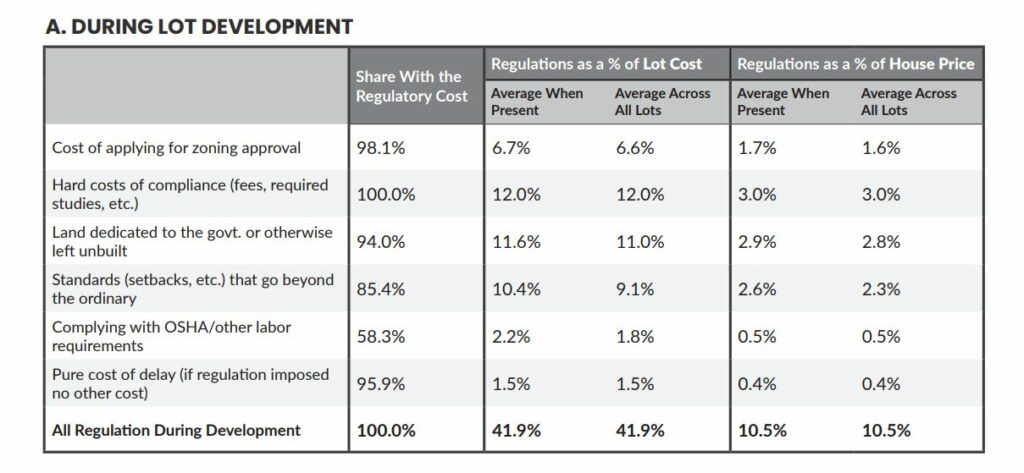The Real Cost of Regulations in Washington
Background
Policymakers and regulators often have good intentions when they propose new rules. However, policymakers generally consider the implications of each regulation in a vacuum before implementing it. The accumulation of regulations over time and their effect on innovation and economic growth receive little or no attention. Take, for example, recent deliberations on amending Washington’s State Energy Code. The Washington State Building Code Council considers each individual proposal on face value rather than as an entire package. The results: A new package of energy codes on July 1, 2023 that will increase the cost of constructing a home and negate any progress made on making housing more affordable.
Like all policies, regulations have unintended consequences. Unfortunately, these consequences disproportionately affect low-income and traditionally disadvantaged households. According to the Mercatus Center at George Mason University, regulation growth in Washington state since 1997 is associated with 93,991 more people living in poverty and a 2.95% increase in income inequality.
The increased number of regulations and costs associated with complying with these regulations has artificially constrained housing supply in Washington state. The grave reality of our state’s underproduction? Up for Growth estimates a deficit of 140,000 housing units. Utilizing similar methodology as the Up for Growth study but applying this to historical data and current demand levels, BIAW has estimated the state is experiencing a housing unit deficit of almost 269,000 units. If no policy changes occur, by 2040 we estimate that this deficit will grow to 323,300 units.
Executive Summary
Considering regulations at the local, state and federal levels, BIAW sought to provide estimates of how much all regulation adds to the cost of a home in each county. According to our findings, as costs associated with regulations rise, new home sale prices also increase. This demonstrates the impact that each regulatory decision has on the affordability of housing.
Unlike other areas of the housing market, regulations present an opportunity to exercise control over added costs. This doesn’t mean that regulators should throw out every regulation, as many are in place to address specific issues. Many other regulations can be reviewed, reduced, and potentially eliminated altogether.
Since 2009, changes to Washington State Building Codes, and specifically the Washington State Energy Code, have added $39,876 to the cost of building a new home, with a majority of that cost borne from the energy code.
As one builder described the situation, “building codes establish the minimum standard for building, with the primary goal of protecting the health and safety of residents. It makes no sense to have such a strict energy code that essentially mandates we build each home like a Tesla when a Toyota is a perfectly suitable option.”
As the state grapples with policies to spur more residential construction to meet unmet demand and provide housing for the unhoused, legislators and policymakers must take a hard look at their priorities. We need a mix of Teslas and Toyotas so more families can find homes they can afford. Washington will never achieve housing justice for its citizens if our current regulatory landscape continues.
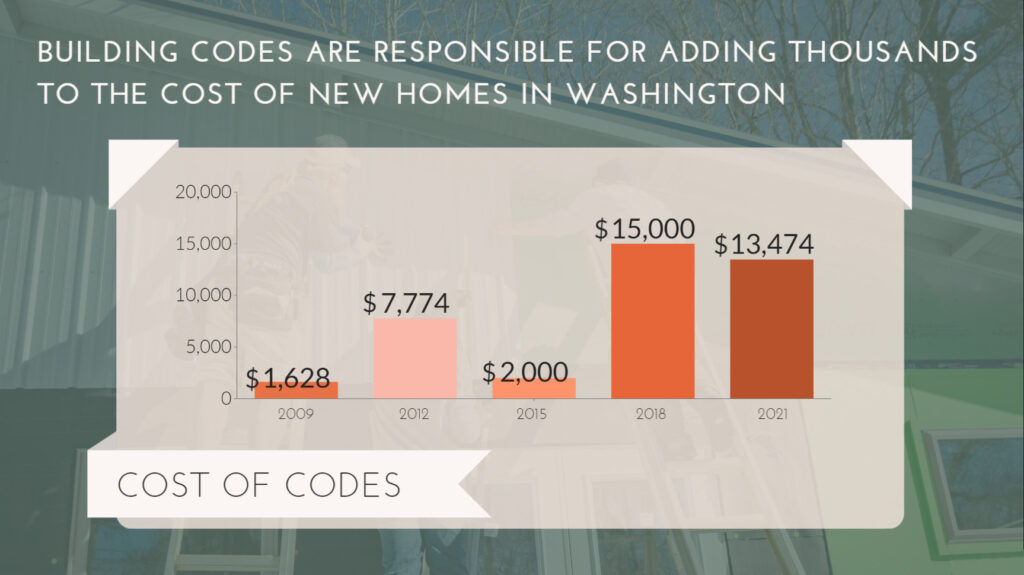
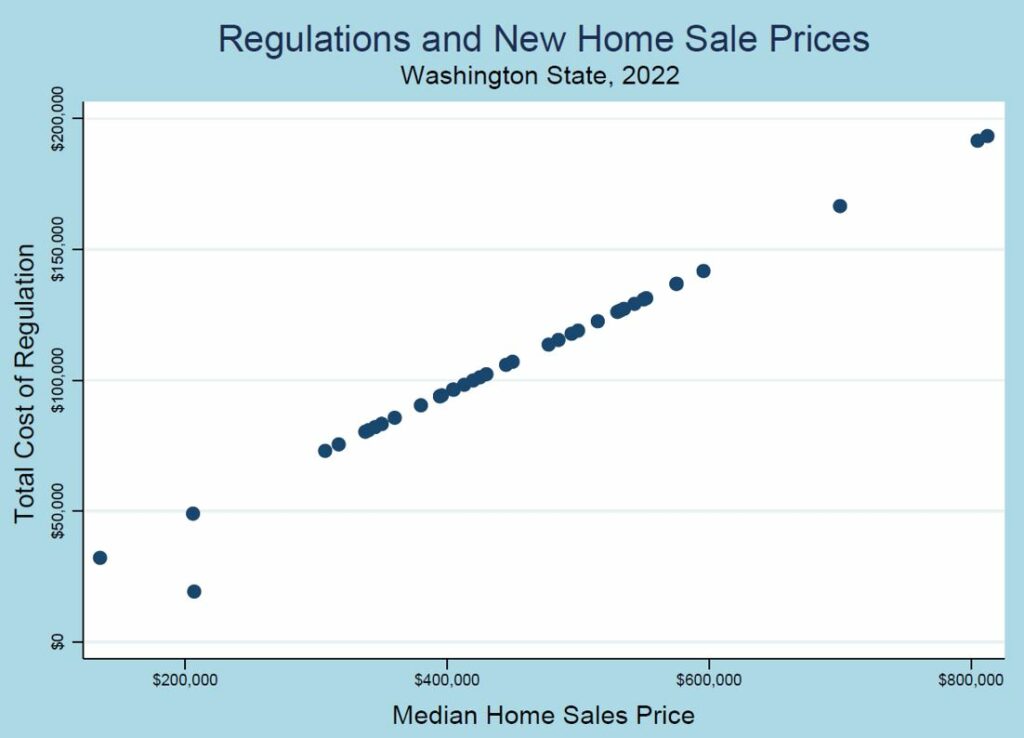
Key findings:
- Regulations imposed by the government at all levels account for 23.8% of the final price of a new single-family home and 40.6% of the final project cost for multi-family structures.
- These regulations affect market-rate and subsidized or non-profit homebuilding as well.
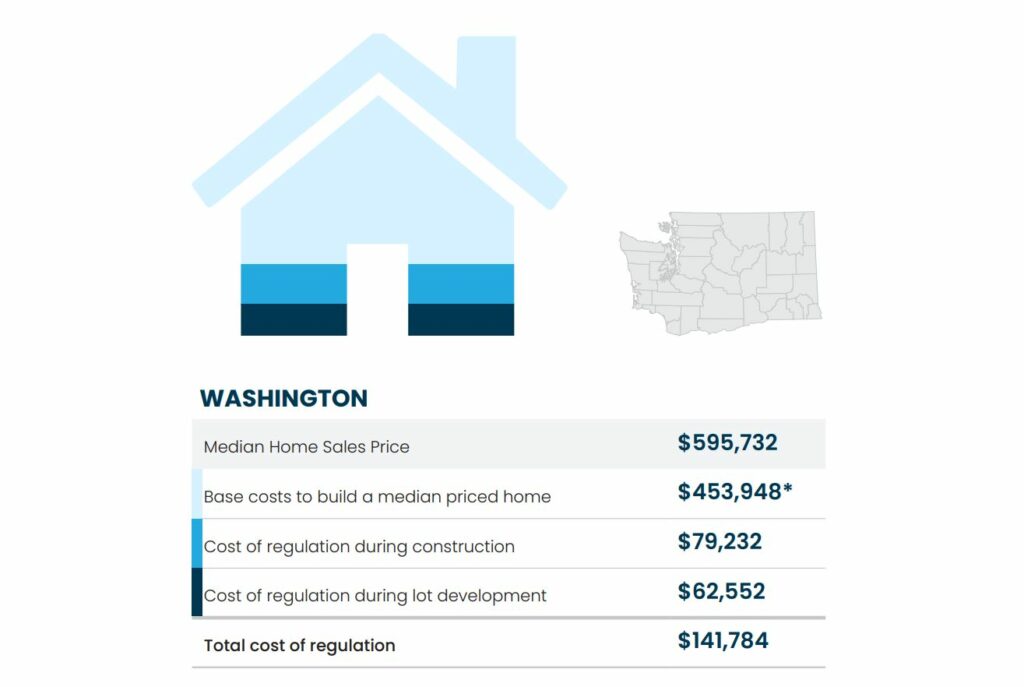
*Base cost to build a home includes land costs as well as construction, labor-materials
Methodology
The Building Industry Association used the National Association of Home Builders’ (NAHB) special study, “Government Regulation in the Price of a New Home: 2021” released in May 2021 as the basis of this study. NAHB surveyed member companies to gauge regulatory costs for the lot development phase of construction, as well as the active construction phase. It’s important to note that the survey didn’t explicitly ask for members to assign a cost to each regulation. Instead, the survey asked for members to attribute a percentage for each of the categories in the two construction phases. Below is a table illustrating the average reported regulation as a percentage of lot cost and home sales price.
NAHB found that regulation during the lot development phase makes up an average of 10.5% of the final home sales price. During the active construction of the home, it’s 23.8% of the sales price. We then applied the median new home sales price documented in the “Priced-Out Estimates for 2022” special study authored by NAHB. If a county didn’t have data available, we used Redfin’s Market Report for the applicable counties (such as Jefferson County).
After finding new home sales prices, we applied the percentages described above to arrive at the total cost of regulation per new home built statewide and by county. To view the data by county, download this report.
Source: 2021, National Association of Home Builders
Limitations
The findings should be used for illustrative purposes only. The percentages outlined are estimates provided by building industry professionals throughout the country. Because of this, it is entirely possible that the percentages could be lower or higher for the state of Washington, and within certain jurisdictions. BIAW is in the early stages of planning a statewide survey for Washington builders and jurisdictions.
Table 1. Average Regulatory Costs (Percentage)
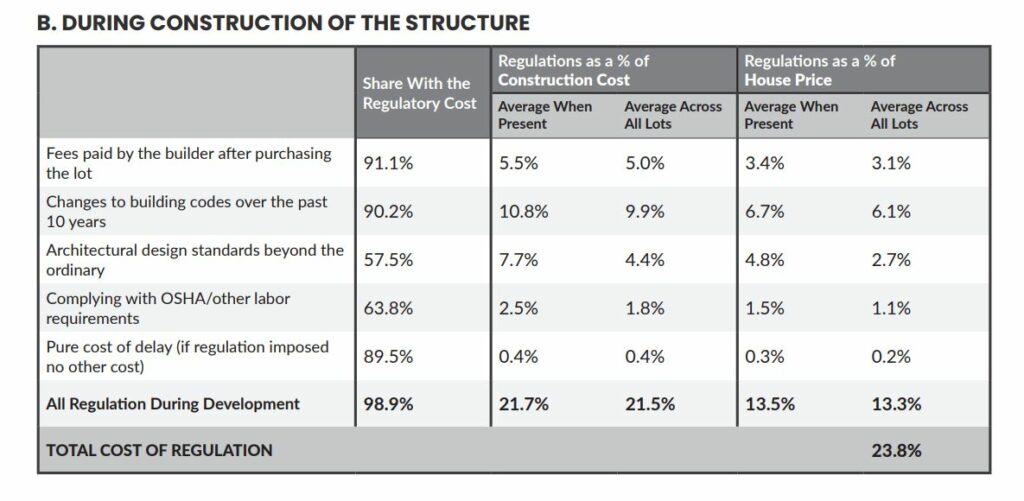
Sources
2022. National Association of Home Builders. “Priced-out Estimates for 2022.” Retrieved from https://www.nahb.org/-/media/05E9E223D0514B56B56F798CAA9EBB34.ashx
2022. Up for Growth. “Housing Underproduction in the U.S.” Retrieved from https://upforgrowth.org/apply-the-vision/housing-underproduction/
April 2022. Chambers, D and O’Reiley, C. “The Regressive Effects of Regulations in Washington.” Mercatus Center, George Mason University. Retrieved from https://www.mercatus.org/research/policy-briefs/regressive-effects-regulations-washington
2021. National Association of Home Builders. “Government Regulation in the Price of a New Home.” Retrieved from https://www.nahb.org/-/media/NAHB/news-and-economics/docs/housing-economics-plus/special-studies/2021/special-study-government-regulation-in-the-price-of-a-new-home-may-2021.pdf
Last revision: February 7, 2023

